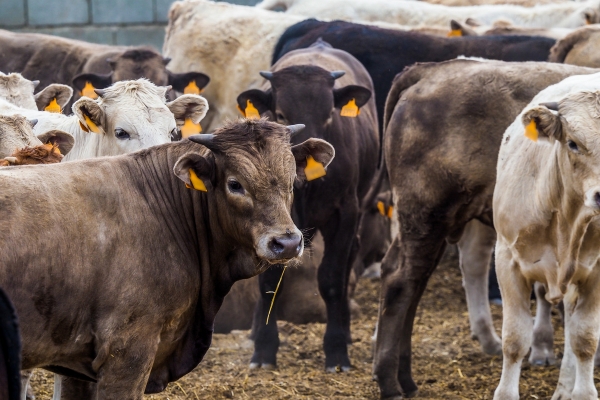Top Priority When Evaluating Breeding Cattle
When it comes to selecting breeding stock for a cattle operation, there are many traits and priorities to evaluate. However, the most crucial factor for breeders to prioritize is an animal’s overall reproductive efficiency and capacity to reliably produce healthy offspring.
Though conformation, performance, temperament and adaptability are all important, the fertility and fecundity of breeding cattle trumps everything else.
Selecting the right breeding cattle is one of the most important decisions a rancher or dairy farmer can make to influence the productivity, profitability and sustainability of their herd. The breeding stock strongly determines traits like growth rate, milk production, calf survival and more in the offspring. With so many selection criteria to balance, it’s vital to identify the top priorities that align with your production goals.
Addressing the Diverse Priorities Across Beef and Dairy Breeds
Beef and dairy cattle producers have some overlapping as well as distinct priorities when evaluating breeding stock. Beef breeders may focus more heavily on efficient growth, feed conversion, carcass quality and calving ease.
Dairy breeders emphasize strong milk production, healthy udders and longevity over many lactations. However, both have a common interest in selecting cattle with excellent reproductive capacity.
Defining the One Crucial Factor for Prioritization
When weighing all the possible selection criteria for breeding cattle, the single most important factor to prioritize is reproductive efficiency and fertility. The cow or bull’s ability to consistently conceive, maintain pregnancy and give birth to live, healthy calves underpins all other traits. Reproductively sound foundation stock gives you more animals to select from in the next generation.
Key Evaluation Criteria in Breeding Cattle
A. Conformation and Soundness
Conformation refers to the bone structure, muscling, body capacity and overall balance of breeding stock. Along with soundness of feet, legs, udder, vision and other anatomical traits, conformation influences durability and longevity. Specifically, breeders may assess:
- Skeletal Structure and Muscle Development
- Foot and Leg Angulation for Efficient Mobility
- Overall Balance and Proportion
- Freedom from Physical Defects and Ailments
B. Performance and Efficiency
Performance testing provides concrete data on traits like weight gain, feed efficiency, carcass grading and milk production. This gauges real-world profit potential. Test criteria include:
- Growth Rate and Feed Conversion Ratio
- Carcass Quality and Meat Marbling
- Milk Production and Lactation Longevity
- Reproductive Capacity and Calving Ease
C. Temperament and Adaptability
Docile cattle with strong immune function and physical resilience to weather, parasites, and diseases are easier to manage and less prone to illness. Specific adaptive traits breeders evaluate include:
- Docility and Ease of Handling
- Resilience to Environmental Stressors
- Herd Behavior and Compatibility
- Disease Resistance and Immune Strength

The Outsized Importance of Reproductive Capacity
Given this range of selection criteria, why does reproductive efficiency trump everything else? Quite simply, because no other trait matters if your breeding stock can’t or won’t reliably reproduce. Infertile animals or those that fail to carry calves to term are useless on a working farm.
All cattle breeds have minimum reproductive benchmarks for selection. For beef cows, a 12 to 15-month calving interval and 16+ year productive lifespan is ideal. For dairy cows, it’s a 12 to 13-month calving cycle and 5+ lactations. Failure to meet these benchmarks early on leads to culling.
What specifically constitutes good reproductive capacity? Measures like conception rate, services per conception, calving interval, age at puberty, and lifetime calves weaned for cows. For bulls, it’s sperm motility, morphology, production and more. These provide objective data to select the most fertile animals as parents of the next generation.
How Fertility Affects Herd Genetics
In order to continually improve the genetics of the herd, you need reliable fertility in your breeding cattle. Cows and bulls that fail to produce offspring can’t pass desirable traits to the next generation.
Any animals that require excessive breeding attempts or veterinary interventions like C-sections or hormone treatments to produce calves should be heavily scrutinized or culled.
Trouble conceiving, aborted pregnancies, and stillbirths all significantly slow genetic progress. At best, you waste time and resources. At worst, you lose irreplaceable genetics by retaining infertile breeding stock. Each failure is an lost opportunity to advance the herd.
The number of quality replacement heifers and bull calves born each year directly impacts a breeding program. The greater number you have to select from, the better chance exceptional individuals will arise. Maximizing fertility rates in both cows and bulls is step one for increasing selection opportunities.

Emerging Trends and Considerations in Breeding Cattle Selection
Advancements in technology, shifts in markets and consumer preferences, increased production efficiency demands, and a focus on ethics and sustainability are all evolving modern cattle breeding.
Technological Advancements and Data-Driven Decision Making
Detailed performance records, genomics testing, embryo transfer and advanced artificial insemination allow for unprecedented control over cattle genetics. As these technologies improve and get cheaper, data-based selection will become standard.
Emphasis on Animal Welfare and Sustainability Practices
Consumers and producers alike are becoming more conscious about humane animal treatment and sustainable practices. Breeding choices that support the health and wellbeing of cattle are increasingly valued.
Consumer Preferences and Market Shifts Impacting Breeder Focus
As consumer demand changes, so do breeding priorities. Grass-fed, organic and humanely raised beef are growth markets that require adaptable, resilient genetics tailored to alternative production methods.
Ethical Considerations and Responsible Breeding Practices
Responsible breeding that focuses on fertility, longevity and animal welfare is essential, not maximum performance at any cost. Productivity must align with ethics.
Conclusion:
When evaluating breeding cattle, many traits influence productivity and profitability. However, reproductive capacity surpasses all other selection criteria. Fertility issues severely hamper genetic progress and herd improvement. Prioritizing reproductive soundness, calving ease, and longevity in breeding stock is crucial for cattle operations to thrive.
By focusing on these fundamentals first, all other desirable traits have the chance to follow in future generations. Reliable reproduction ensures a steady pipeline of quality replacement heifers and bulls to continue advancing the herd.


